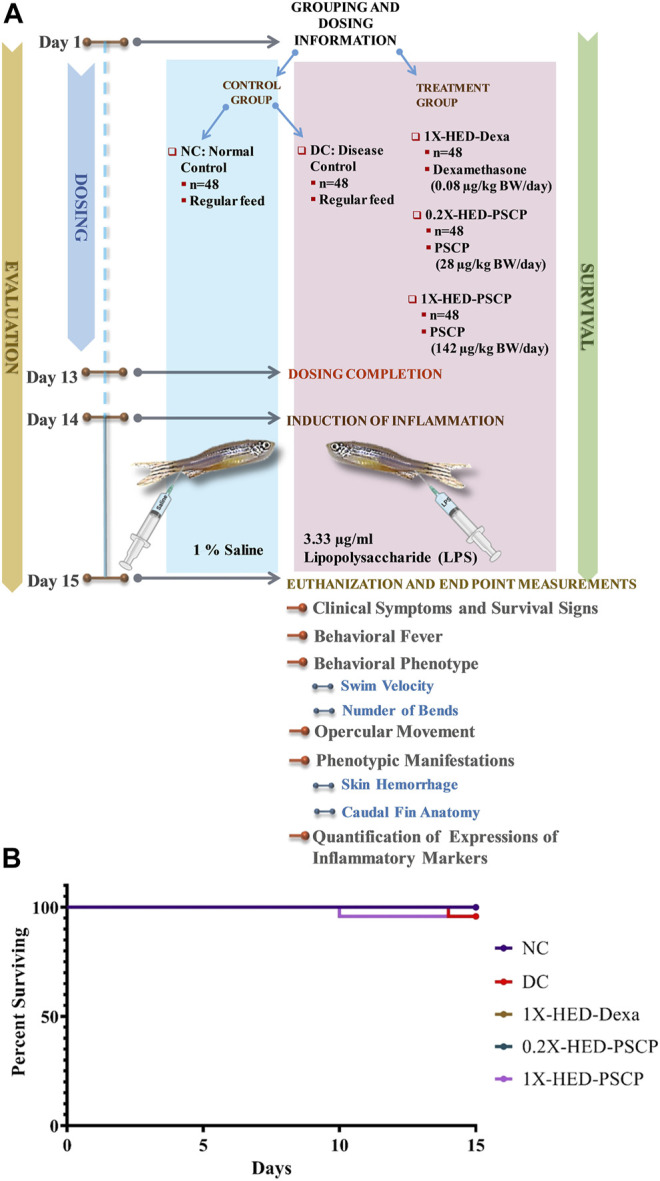FIGURE 1.

Study plan and effect of PSCP on zebrafish survival. (A) Schematic illustrates the entire study plan. PSCP as an anti-inflammatory agent was evaluated. Its effects on behavioral, anatomical, and physiological manifestations were carried out in parallel with assessing its consequences on the survival of the zebrafish. The schematic details the timeline of the experiment, groups, and administered doses. The study was carried out for 15 days, starting with grouping and dosing on Day 1. Five groups, namely, normal control (NC), disease control (DC) under control category, and 1X-HED-Dexa, 0.2X-HED-PSCP, and 1X-HED-PSCP under treatment category were formed. Each group consisted of 48 fish; 24 of which were dedicated for evaluating behavioral, anatomical, and physiological manifestations of PSCP feeding, whereas the remaining 24 fish in each group were followed for survival analysis. Zebrafish in the NC and DC groups were fed regular pellets, those in the 1X-HED-Dexa group received dexamethasone enriched pellets at 0.08 μg/kg body weight/day, which is the human equivalent dose (HED) of dexamethasone for zebrafish. Zebrafish in groups 0.2X-HED-PSCP and 1X-HED-PSCP were fed with pellets enriched with PSCP at 28 and 142 μg/kg body weight/day, respectively, which was one-fifth of the human equivalent dose, that is, 0.2X-HED and the human equivalent dose, that is, 1X-HED. Treatments were administered for 13 days followed by induction of inflammation through lipopolysaccharide (LPS) injection on Day 14. Zebrafish of all except the NC group were injected with LPS. The endpoint parameters, namely, behavioral fever, swim velocity, number of bends taken by each fish during swimming, opercular movement, anatomical effects, like skin hemorrhage and morphological anomaly of caudal fins and immunological responses such as alterations in expressions of inflammatory markers, such as interleukin-6 (IL-6), C-reactive protein (CRP), tumor necrosis factor alpha (TNF-α), and interleukin 1-beta (IL-1β), were measured on Day 15. (B) Survival of the zebrafish included in the study is represented as a Kaplan-Meier curve.
